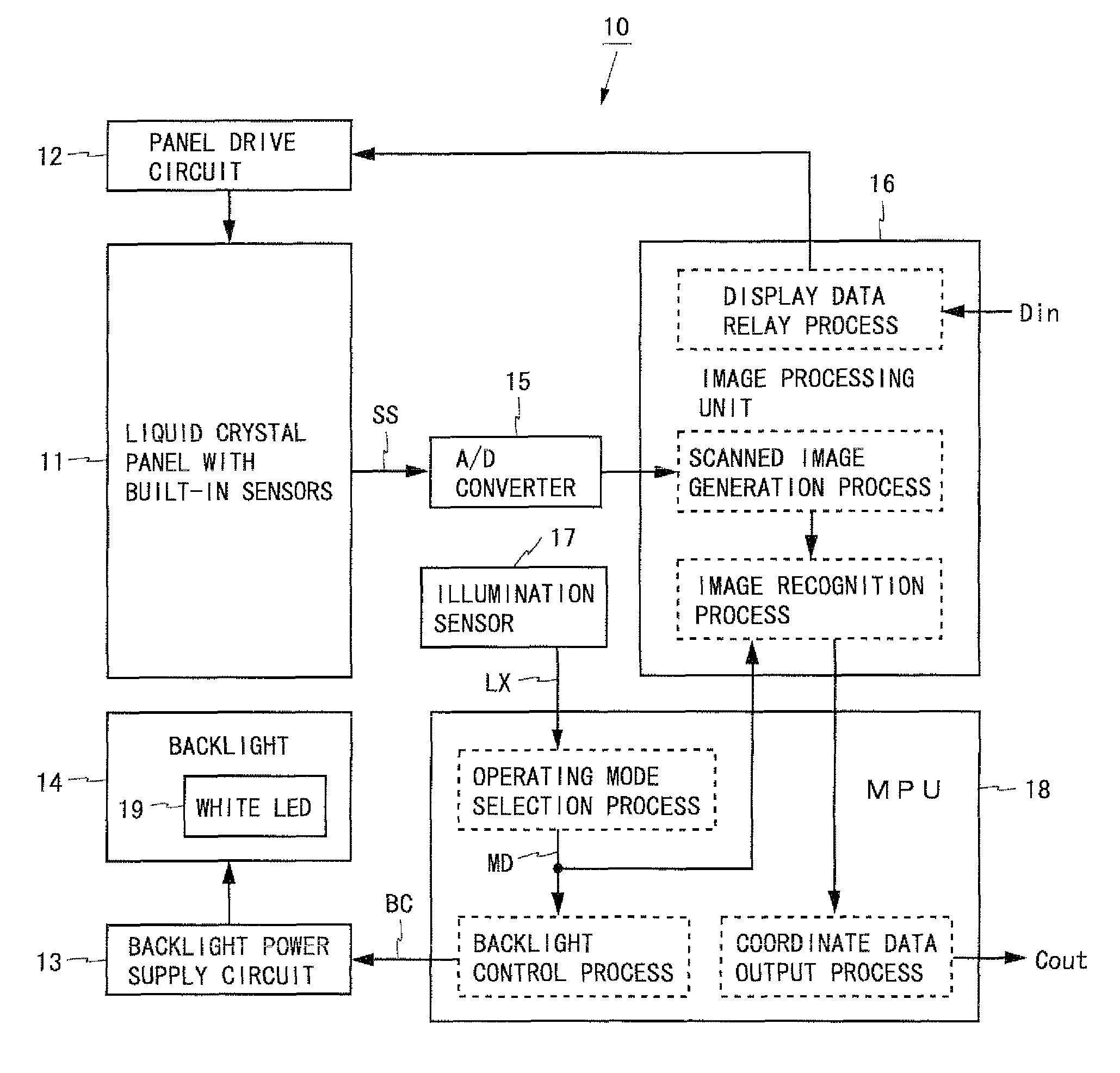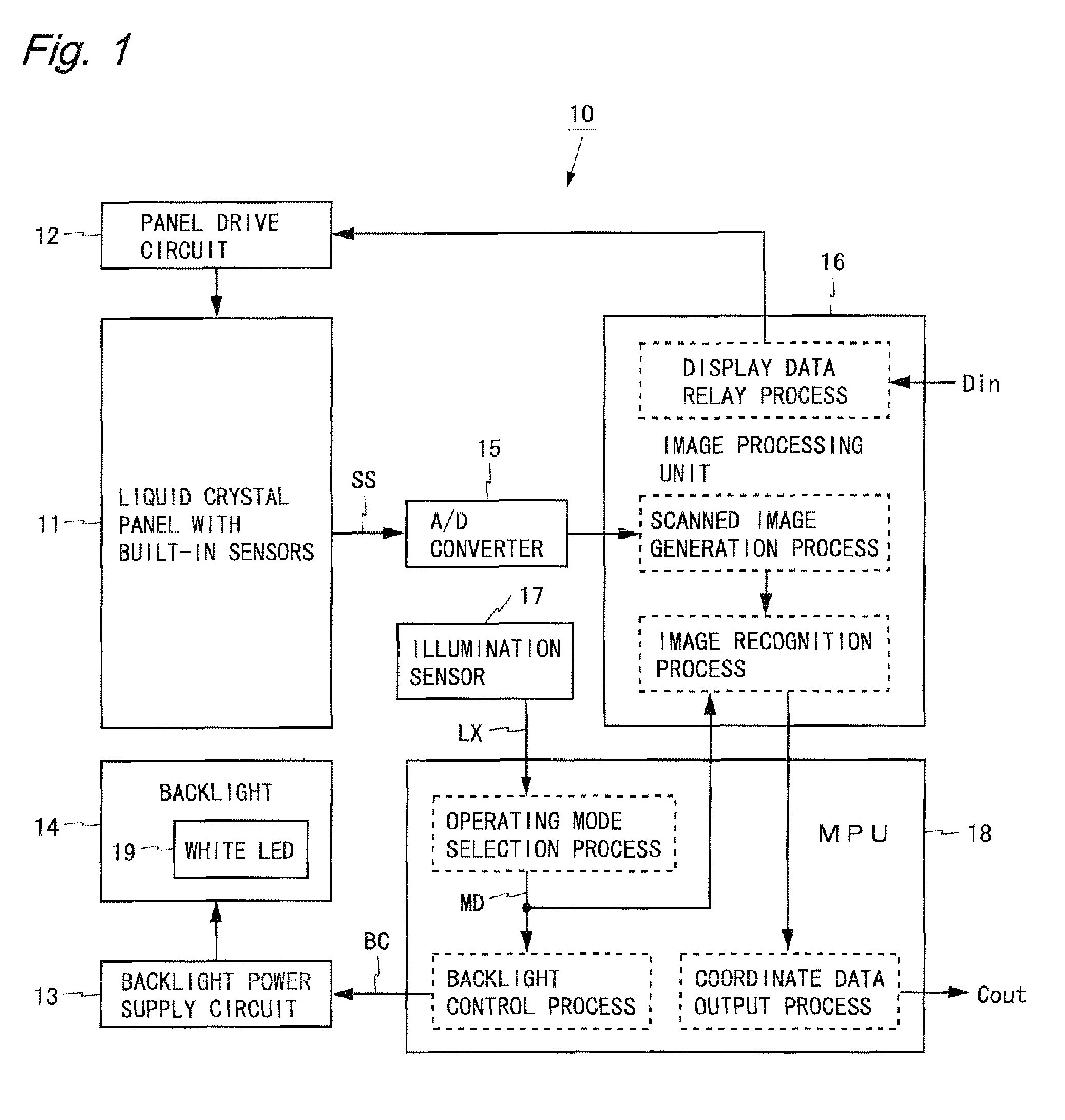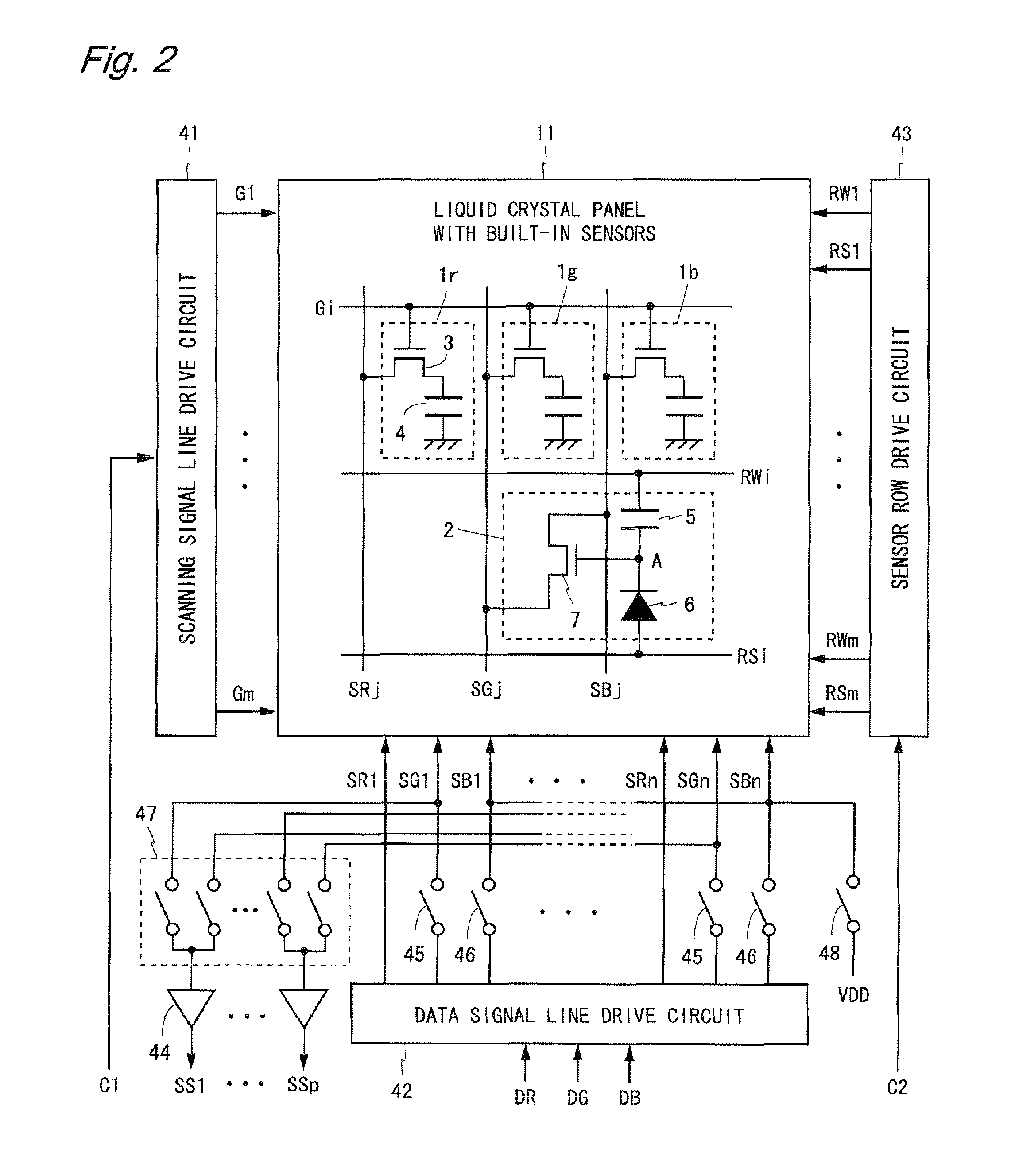Display device having optical sensors
a display device and optical sensor technology, applied in the field of display devices, can solve the problems of inability to detect the touch position properly, difficult to distinguish between the shadow image and the background, etc., and achieve the effect of increasing the luminance of the reflection image, increasing the detection accuracy of the touch position, and saving power consumption
- Summary
- Abstract
- Description
- Claims
- Application Information
AI Technical Summary
Benefits of technology
Problems solved by technology
Method used
Image
Examples
first embodiment
[0070](First Embodiment)
[0071]FIG. 1 is a block diagram showing a configuration of a liquid crystal display device according to a first embodiment of the present invention. A liquid crystal display device 10 shown in FIG. 1 includes a liquid crystal panel with built-in sensors 11, a panel drive circuit 12, a backlight power supply circuit 13, a backlight 14, an A / D converter 15, an image processing unit 16, an illumination sensor 17, and a microprocessor unit (hereinafter, referred to as the MPU) 18.
[0072]The liquid crystal panel with built-in sensors 11 (hereinafter, referred to as the liquid crystal panel 11) includes a plurality of pixel circuits and a plurality of optical sensors which are arranged two-dimensionally (details will be described later). Display data Din is inputted to the liquid crystal display device 10 from an external source. The inputted display data Din is supplied to the panel drive circuit 12 via the image processing unit 16. The panel drive circuit 12 write...
second embodiment
[0110](Second Embodiment)
[0111]FIG. 9 is a block diagram showing a configuration of a liquid crystal display device according to a second embodiment of the present invention. A liquid crystal display device 20 shown in FIG. 9 is such that in the liquid crystal display device 10 according to the first embodiment (FIG. 1), the backlight power supply circuit 13, the backlight 14, and the MPU 18 are replaced by a backlight power supply circuit 23, a backlight 24, and an MPU 28, respectively. Of the components in the present embodiment, the same components as those in the first embodiment are denoted by the same reference numerals and description thereof is omitted.
[0112]The backlight 24 includes a plurality of red LEDs 29r, a plurality of green LEDs 29g, and a plurality of blue LEDs 29b. The three types of LEDs 29r, 29g, and 29b are controlled to be turned on in turn for a predetermined period of time during one frame time. The backlight power supply circuit 23 individually switches whe...
third embodiment
[0118](Third Embodiment)
[0119]FIG. 12 is a block diagram showing a configuration of a liquid crystal display device according to a third embodiment of the present invention. A liquid crystal display device 30 shown in FIG. 12 is such that the illumination sensor 17 is removed from the liquid crystal display device 10 according to the first embodiment (FIG. 1) and the image processing unit 16 and the MPU 18 are replaced by an image processing unit 36 and an MPU 38, respectively. Of the components in the present embodiment, the same components as those in the first embodiment are denoted by the same reference numerals and description thereof is omitted.
[0120]Display data Din inputted to the liquid crystal display device 30 is supplied to a panel drive circuit 12 via the image processing unit 36. The image processing unit 36 stores a portion of the display data Din for one frame, obtains a rate of blue components contained in the portion of the display data Din for one frame (hereinaft...
PUM
 Login to View More
Login to View More Abstract
Description
Claims
Application Information
 Login to View More
Login to View More - R&D
- Intellectual Property
- Life Sciences
- Materials
- Tech Scout
- Unparalleled Data Quality
- Higher Quality Content
- 60% Fewer Hallucinations
Browse by: Latest US Patents, China's latest patents, Technical Efficacy Thesaurus, Application Domain, Technology Topic, Popular Technical Reports.
© 2025 PatSnap. All rights reserved.Legal|Privacy policy|Modern Slavery Act Transparency Statement|Sitemap|About US| Contact US: help@patsnap.com



